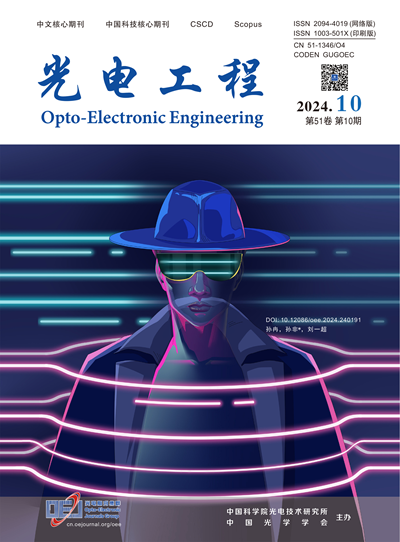宏/亚脉冲编码光子计数激光雷达
Q3 Engineering
引用次数: 1
摘要
光子计数激光雷达以其较高的探测灵敏度在远距离目标测量中发挥着重要的作用。对于径向速度大、距离远的目标,普通光子计数激光雷达无法简单地通过统计直方图恢复有用的回波信息。为了解决这一问题,提出了一种基于宏/子脉冲编码光子计数激光雷达的方法。通过时移脉冲累加提取子脉冲的飞行时间,在一个宏脉冲中获得目标距离信息。本文建立了宏/亚脉冲编码光子计数激光雷达的理论模型,分析了虚警概率和探测概率对激光雷达的影响。通过蒙特卡罗仿真和实际实验验证了激光雷达的有效性。本文章由计算机程序翻译,如有差异,请以英文原文为准。
Macro/sub-pulse coded photon counting LiDAR
Photon counting LiDAR plays an important role in the long-distance target measurement because of the high detection sensitivity. For the targets with high radial velocity and long distance, ordinary photon counting LiDAR could not recover the useful echo information simply by statistical histogram. In order to solve this problem, a method based on macro/sub-pulse coded photon counting LiDAR is proposed. The flight time of the subpulses is extracted by time shift pulse accumulation and the target distance information is obtained in one macro pulse. In this paper, the theoretical model of macro/sub-pulse coded photon counting LiDAR is established, and the influence of false alarm probability and detection probability is analyzed. The effectiveness of the LiDAR is verified by Monte Carlo simulation and actual experiments.
求助全文
通过发布文献求助,成功后即可免费获取论文全文。
去求助
来源期刊

光电工程
Engineering-Electrical and Electronic Engineering
CiteScore
2.00
自引率
0.00%
发文量
6622
期刊介绍:
Founded in 1974, Opto-Electronic Engineering is an academic journal under the supervision of the Chinese Academy of Sciences and co-sponsored by the Institute of Optoelectronic Technology of the Chinese Academy of Sciences (IOTC) and the Optical Society of China (OSC). It is a core journal in Chinese and a core journal in Chinese science and technology, and it is included in domestic and international databases, such as Scopus, CA, CSCD, CNKI, and Wanfang.
Opto-Electronic Engineering is a peer-reviewed journal with subject areas including not only the basic disciplines of optics and electricity, but also engineering research and engineering applications. Optoelectronic Engineering mainly publishes scientific research progress, original results and reviews in the field of optoelectronics, and publishes related topics for hot issues and frontier subjects.
The main directions of the journal include:
- Optical design and optical engineering
- Photovoltaic technology and applications
- Lasers, optical fibres and communications
- Optical materials and photonic devices
- Optical Signal Processing
 求助内容:
求助内容: 应助结果提醒方式:
应助结果提醒方式:


